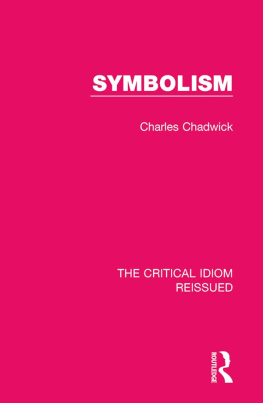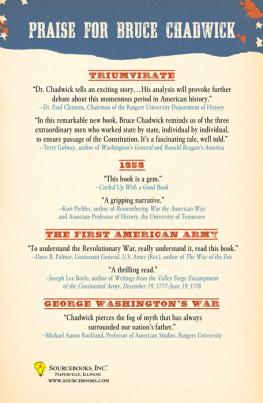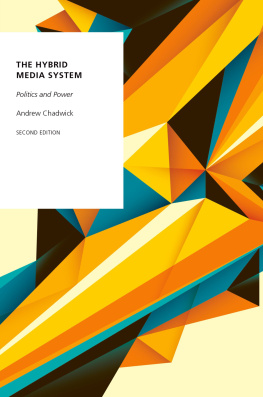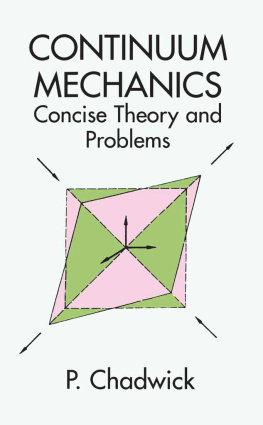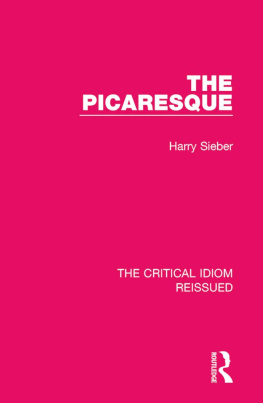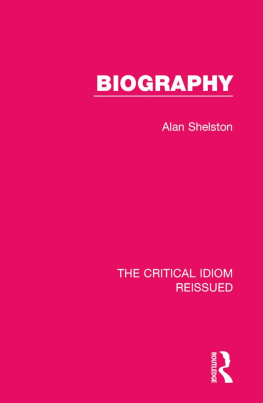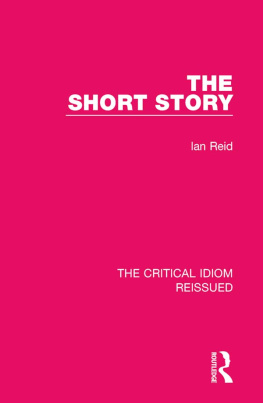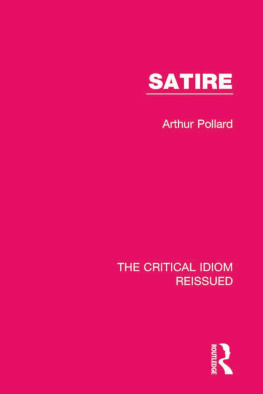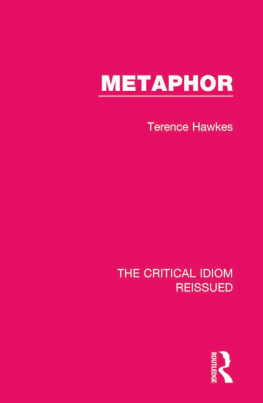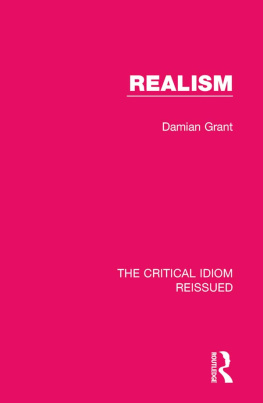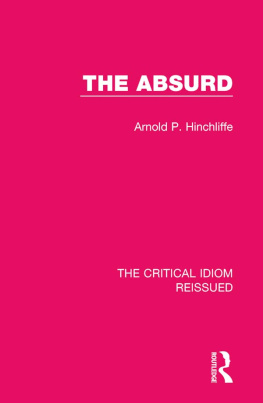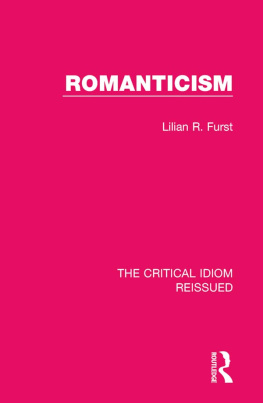Table of Contents
Guide
Print Page Numbers
THE CRITICAL IDIOM REISSUED
Volume 15
SYMBOLISM
SYMBOLISM
CHARLES CHADWICK
First published in 1971 by Methuen & Co Ltd
This edition first published in 2018
by Routledge
2 Park Square, Milton Park, Abingdon, Oxon OX14 4RN
and by Routledge
711 Third Avenue, New York, NY 10017
Routledge is an imprint of the Taylor & Francis Group, an informa business
1971 Charles Chadwick
All rights reserved. No part of this book may be reprinted or reproduced or utilised in any form or by any electronic, mechanical, or other means, now known or hereafter invented, including photocopying and recording, or in any information storage or retrieval system, without permission in writing from the publishers.
Trademark notice: Product or corporate names may be trademarks or registered trademarks, and are used only for identification and explanation without intent to infringe.
British Library Cataloguing in Publication Data
A catalogue record for this book is available from the British Library
ISBN: 978-1-138-21971-7 (Set)
ISBN: 978-1-315-26975-7 (Set) (ebk)
ISBN: 978-1-138-28313-8 (Volume 15) (hbk)
ISBN: 978-1-315-27041-8 (Volume 15) (ebk)
Publishers Note
The publisher has gone to great lengths to ensure the quality of this reprint but points out that some imperfections in the original copies may be apparent.
Disclaimer
The publisher has made every effort to trace copyright holders and would welcome correspondence from those they have been unable to trace.
Symbolism
Charles Chadwick
First published 1971
by Methuen & Co Ltd,
11 New Fetter Lane, London EC4
1971 Charles Chadwick
SBN 416 60900 7 Hardback
SBN 416 60910 4 Paperback
This title is available in both hard and paperback editions. The paperback edition is sold subject to the condition that it shall not, by way of trade or otherwise, be lent, re-sold, hired out, or otherwise circulated without the publishers prior consent in any form of binding or cover other than that in which it is published and without a similar condition including this condition being imposed on the subsequent purchaser.
Distributed in the U.S.A.
by Barnes & Noble Inc.
to NOB
Contents
This volume is one of a series of short studies, each dealing with a single key item, or a group of two or three key items, in our critical vocabulary. The purpose of the series differs from that served by the standard glossaries of literary terms. Many terms are adequately defined for the needs of students by the brief entries in these glossaries, and such terms will not be the subjects of studies in the present series. But there are other terms which cannot be made familiar by means of compact definitions. Students need to grow accustomed to them through simple and straightforward but reasonably full discussions of them. The purpose of this series is to provide such discussions.
Some of the terms in question refer to literary movements (e.g., Romanticism, Aestheticism, etc.), others to literary kinds (e.g., Comedy, Epic, etc.), and still others to stylistic features (e.g., Irony, The Conceit, etc.). Because of this diversity of subject-matter, no attempt has been made to impose a uniform pattern upon the studies. But all authors have tried to provide as full illustrative quotation as possible, to make reference whenever appropriate to more than one literature, and to compose their studies in such a way as to guide readers towards the short bibliographies in which they have made suggestions for further reading.
John D. Jump
University of Manchester
Spelt with a small initial letter the word symbolism, like the words romanticism and classicism, can have an extremely wide meaning. It can be used to describe any mode of expression which, instead of referring to something directly, refers to it indirectly through the medium of something else. Clearly, therefore, the meaning of the word symbolism must be narrowed down if it is to have any significance as a critical term.
A first stage in this process would be to agree that it is not the mere substitution of one object for another comparing, for example, as Milton does, Satans defeated legions to the autumnal leaves that strew the brooks in Vallombrosa but the use of concrete imagery to express abstract ideas and emotions. This still, however, leaves its meaning very wide since, as T. S. Eliot pointed out in an essay on Hamlet, the only way of expressing emotion in the form of art is by finding what he calls, not a symbol, but an objective correlative, that is a set of objects, a situation, a chain of events which shall be the formula of that particular emotion. Stphane Mallarm had said something of the same sort thirty years before in 1891 when he had defined Symbolism as the art of evoking an object little by little so as to reveal a mood or, conversely, the art of choosing an object and extracting from it an tat dme (Oeuvres Compltes, p. 869). But he had added that this mood should be extracted par une srie de dchiffrements by a series of decipherings and in the previous half of his definition it is important to note that he had talked of evoking an object little by little. Both these phrases imply that the objective correlative and its associated mood should not be revealed openly and clearly but should merely be hinted at. This is, in fact, a point which Mallarm emphasizes elsewhere in the same passage where he contends that to name an object is to banish the major part of the enjoyment derived from a poem, since this enjoyment consists in a process of gradual revelation. The object, he claims, should merely be suggested suggrer, voil le rve and he concludes that it is the perfect practice of this mysterious process which constitutes Symbolism cest le parfait usage de ce mystre qui constitue le symbole.
Mallarms disciple, Henri de Rgnier, made much the same point when he defined the term symbol as being a comparison between the abstract and the concrete with one of the terms of the comparison being merely suggested une comparaison de labstrait au concret dont un des termes reste sous-entendu. And, as Rgnier further pointed out, because the symbol thus frequently stands alone, with the reader being given little or no indication as to what is being symbolized, Symbolist poetry inevitably has a certain built-in obscurity. Mallarm is reputed to have said that he had banished the words as and like from his vocabulary, and although some of his earlier poems are clearly divided into an opening image followed by a section interpreting the image, in his later poems, as we shall see, he tends more and more to omit, or at least to play down the interpretation and to leave the symbol virtually unexplained. Similarly, the sad and mournful landscapes of Mallarms contemporary, Paul Verlaine, are intended to convey to the reader the poets profound melancholy though his poems rarely state explicitly that this is their purpose.

